Londonderry is the second largest city in Northern Ireland, located just over the Irish border. Derry means “oak grove.” The name comes from the Irish name “Doire,” which is why you can still see oak trees growing in many places. The city is located on the Foyle River and has a population of about 85,000.
It is also a city with two names. Derry-Londonderry. It’s easiest to use two names at the same time. Why? Well, so as not to offend someone. For Derry is the name used most often by Catholics and in Ireland. Londonderry is the name given by the British, the protestants. Even though any years have passed, some people are still irritated by these sensitive issues. Besides, Derry is the only walled city in Ireland (preserved completely).
These are not the only things Derry-Londonderry is associated with. The city is infamously known for the Troubles, or more precisely, Bloody Sunday. Indeed, it is impossible to tell the history of Derry, or even of Northern Ireland, without telling the story of the Troubles. However, I will start typically, with the city’s attractions, moving on to its history.
Table of Contents
- 1 Top-Rated Attractions & Things to Do in Derry-Londonderry
- 2 Londonderry – What to See?
- 3 The Troubles in Northern Ireland – a Brief Introduction
- 4 Free Derry Museum – Free Derry Museum
- 5 Bloody Sunday in Derry
- 6 Derry Tour Idea
- 7 Accommodation. Where to Sleep in Derry?
- 8 Derry – Where to Eat? Restaurants and Places with Tasty Food
- 9 Travel in Northern Ireland
Top-Rated Attractions & Things to Do in Derry-Londonderry
What is worth seeing in Derry? There are several attractions in this city, the most popular being the historic walls, about 1.5 km long, which form a walkway around the historic center of the city. The city walls in Londonderry were built between 1613 and 1618 by the Honorable Irish Society. Today from them you can see the original layout of the city.
Another interesting place is Guidehall or Londonderry Town Hall. The history of the place is connected with the British, as it was they who erected this unusual building. It is worth going inside (entrance is free) and learning more about the history of the city. First of all, the beautiful stained-glass windows catch the eye in this place. To be honest, without checking the map, I was convinced it was a church!
Another attraction in Derry would be the city’s museums. I had a Derry Pass city card and visited the Free Derry Museum and the Tower Museum, but these are not all of Derry’s museums, there is also, for example, the Siege Museum. What I learned at the museum I write about later on.
As usual, the most interesting things are found in hidden places. Such a place is the Craft Village. It is simply a reconstruction of an 18th-century street and a 19th-century square. There are stores where you can buy interesting, unique gifts, as well as restaurants and cafes, perfect for breakfast or coffee with locally baked pastries. It is, in my opinion, the most beautiful place in the whole city!

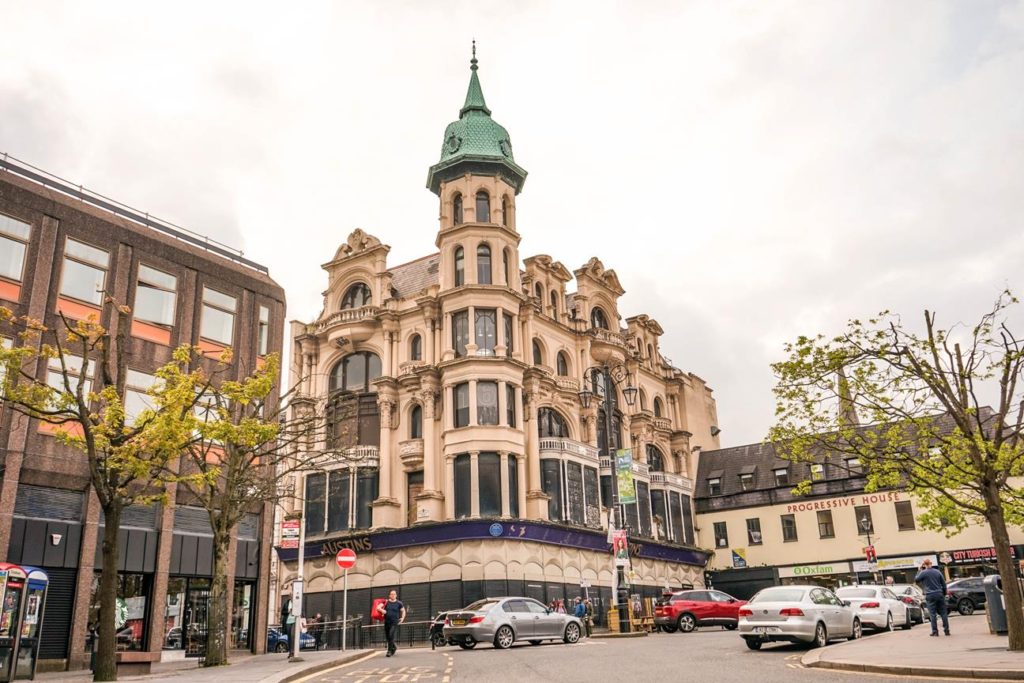
Londonderry – What to See?
Let’s take a walk across the Peace Bridge. The Peace Bridge in Londonderry is a connection between the city center and the newly built Ebrington Square. The bridge connects the city for pedestrians and cyclists, and cannot be crossed by car. Interestingly, it was specially designed so that when you look at the bridge from the shore, you see a peace sign (V).
If you cross the Peace Bridge, it’s worth going to St Columb’s Park. It is, in the opinion of many, the most beautiful park in the city, and you can enjoy a cup of coffee or see squirrels in it (gray, like most on the island). There are, of course, the oak trees for which Derry is famous.
Back on the other side of the Folye River, walking through the streets of the city, our attention is caught by a sign YOU ARE NOW ENTERING A FREE DERRY. This slogan was first painted in January 1969, just after a late-night raid by British police in the Catholic Bogside neighborhood (you can read more about the city’s history below). In some places one can sense the nostalgia written on the murals and individual buildings. Or at least that was my impression.
While we’re on the theme of murals, the popular series “Derry Girls” was filmed here. There is a mural of “Derry Girls” in one of the streets. If you don’t know it, there are currently two seasons available on Netflix, with a third season coming soon. The series is set in the 90s, we watch the reality presented in a rather comedic way. In my opinion, it is worth seeing, ordinary, everyday life is intertwined with the Troubles. This is a series that tells the story in a light-hearted way. For example, in the first episode, when a bomb is planted on a bridge in Derry, the girls complain that they won’t go to school. And as I’ve started talking about the story I’ll move on to the next topic. To the Troubles.
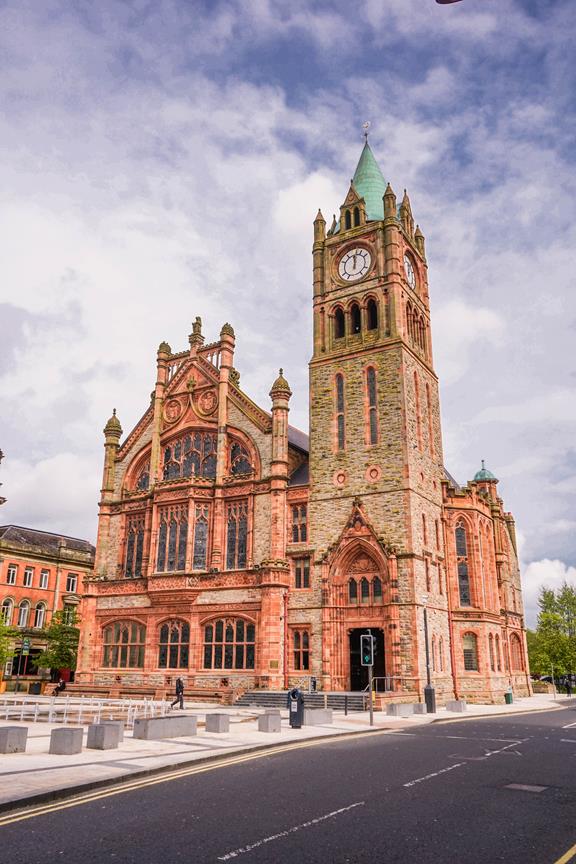
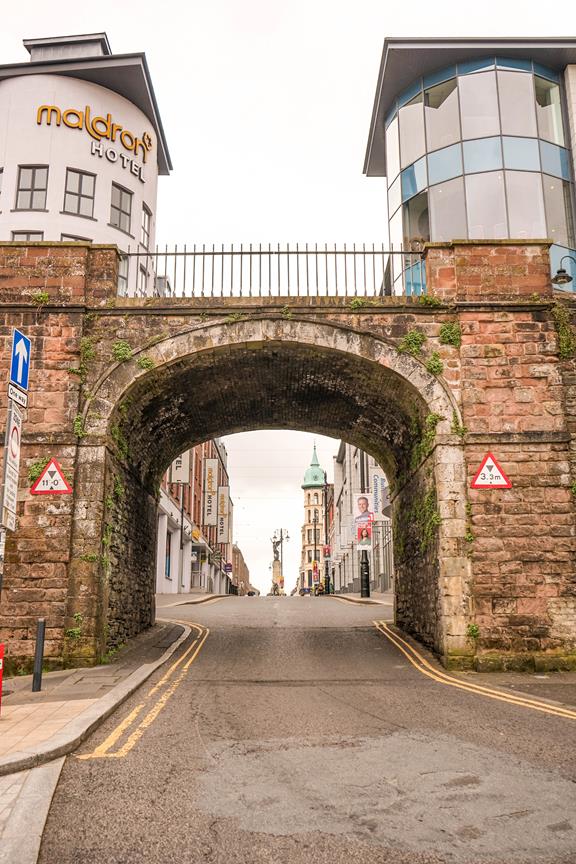
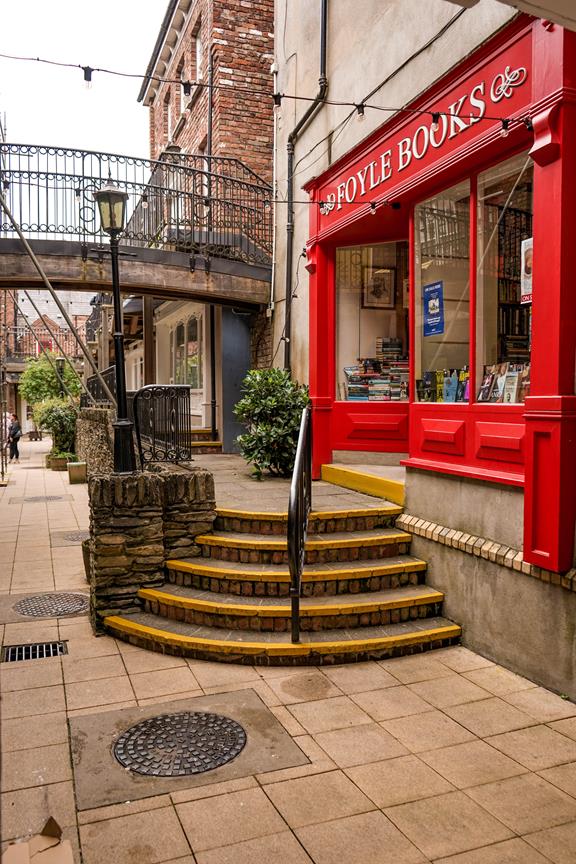

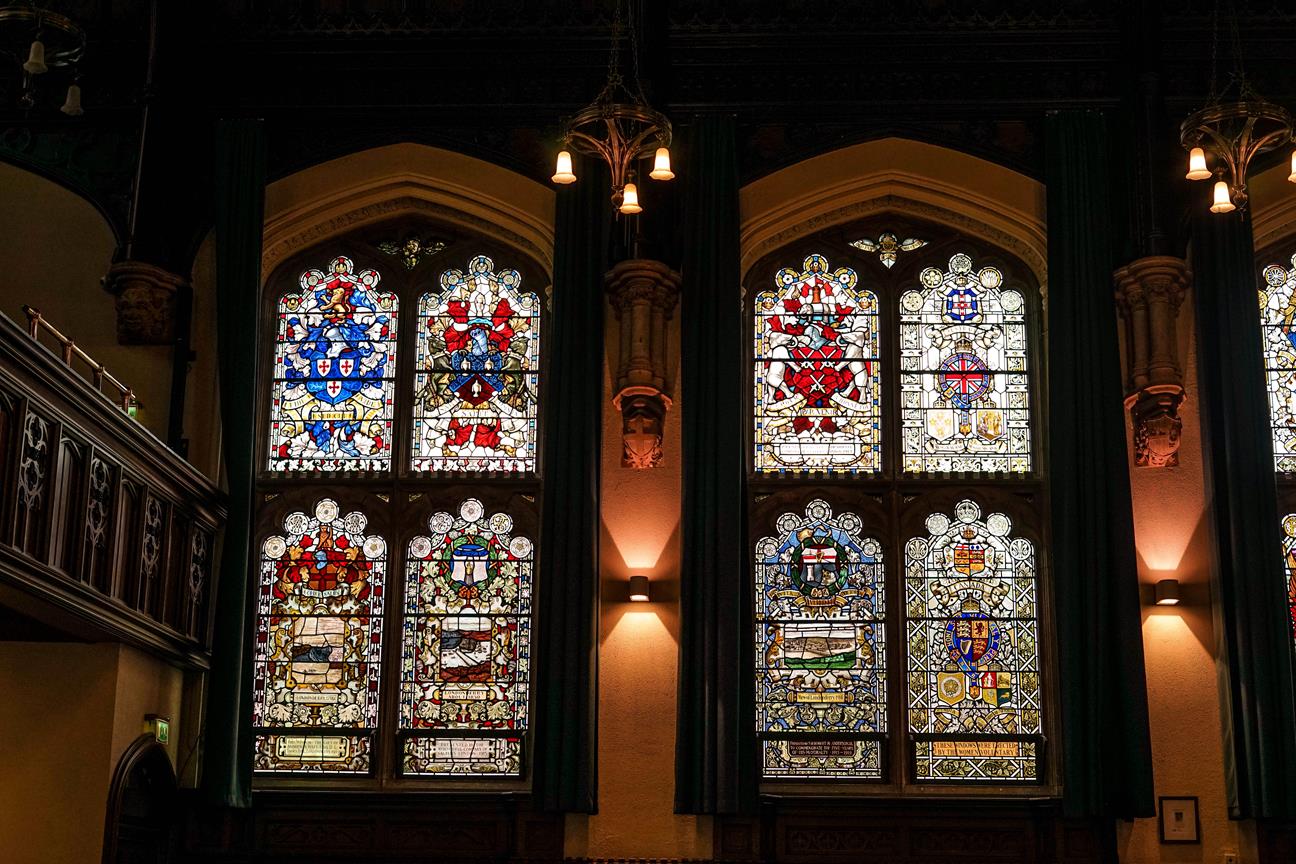
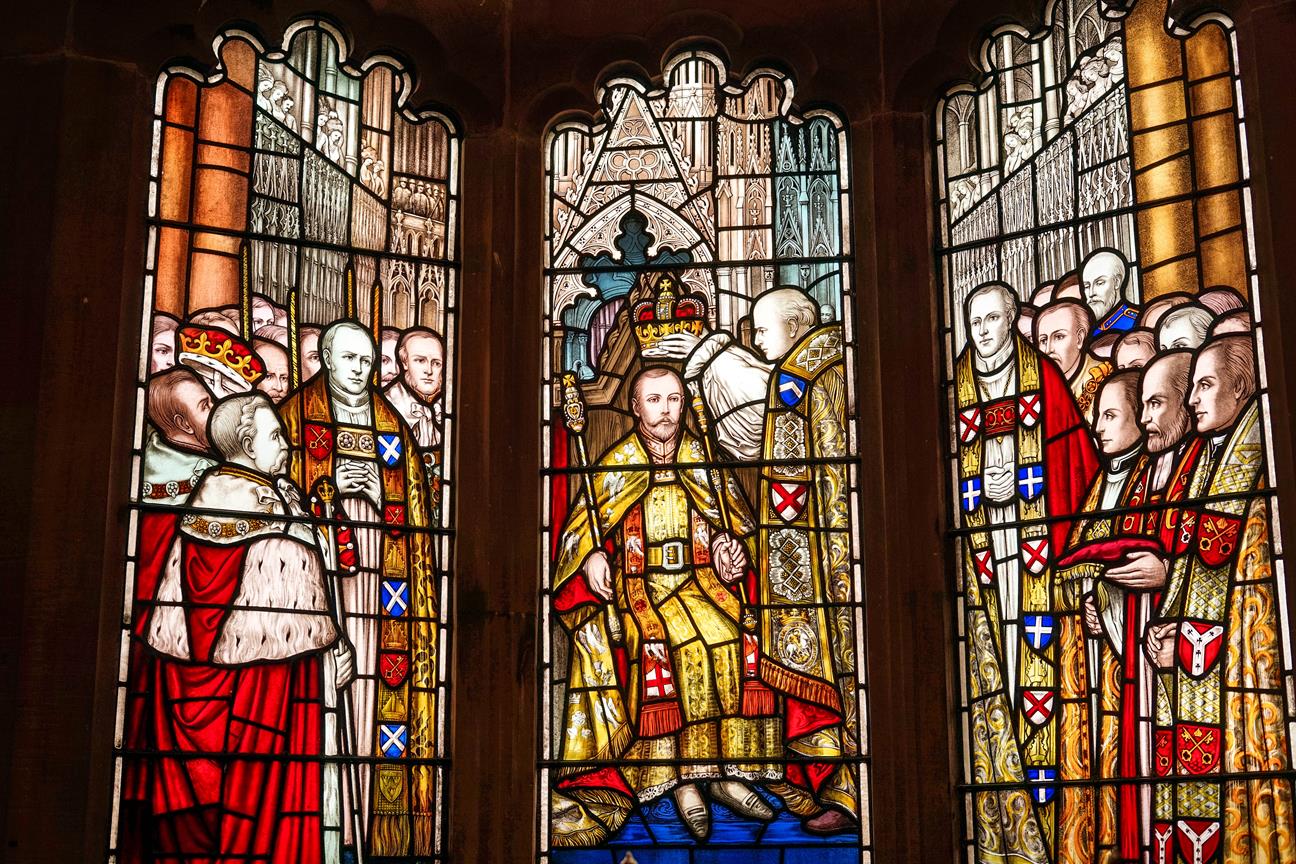
The Troubles in Northern Ireland – a Brief Introduction
The Troubles is a very innocent name for what happened in this country from the 1960s until 1998. However, to understand the history of the Troubles, it is worth starting with a visit to the Tower Museum Derry. There you’ll find a really interesting exhibition telling the story of the city and Northern Ireland. You will also learn more about the genesis of the Troubles.
What was the Troubles? Some call it a conflict between the Irish and the British. Others a religious war between Protestants and Catholics. Over the years more than 3,500 people were killed, many civilians (nearly 2,000 people). Irish republicans were for the unification of Northern Ireland with Ireland, while Ulster loyalists wanted for Northern Ireland to be part of the United Kingdom. The Troubles continued until 1998, at which time the Good Friday Agreement was signed in Belfast. After that the aggression began to cease.
The troubles in Northern Ireland are a very complex topic. Most often people speak about 30 years of conflict, but in fact it all started hundreds of years earlier, when Scots and English arrived in Northern Ireland, at the invitation of the British Crown. This period is called the Settlement. So in the 16th century the new inhabitants got land, many rights that the old inhabitants of the island did not have.
In 1921 Ireland gained independence from Great Britain, while part of the island, more precisely the part that makes up today’s Northern Ireland, was still under the crown’s sovereignty. After World War II the nationalist movement intensified, especially since in 1968 the Irish still did not have the full rights that should have been in place at the time. For example, in order to vote in local elections in Northern Ireland, one had to be a homeowner, most of whom were middle- and upper-class Protestants. Many British people were business owners, which gave them additional votes. So in Derry, where there were many more Catholics, unrest began to grow. They fought for the “one man, one vote” law.
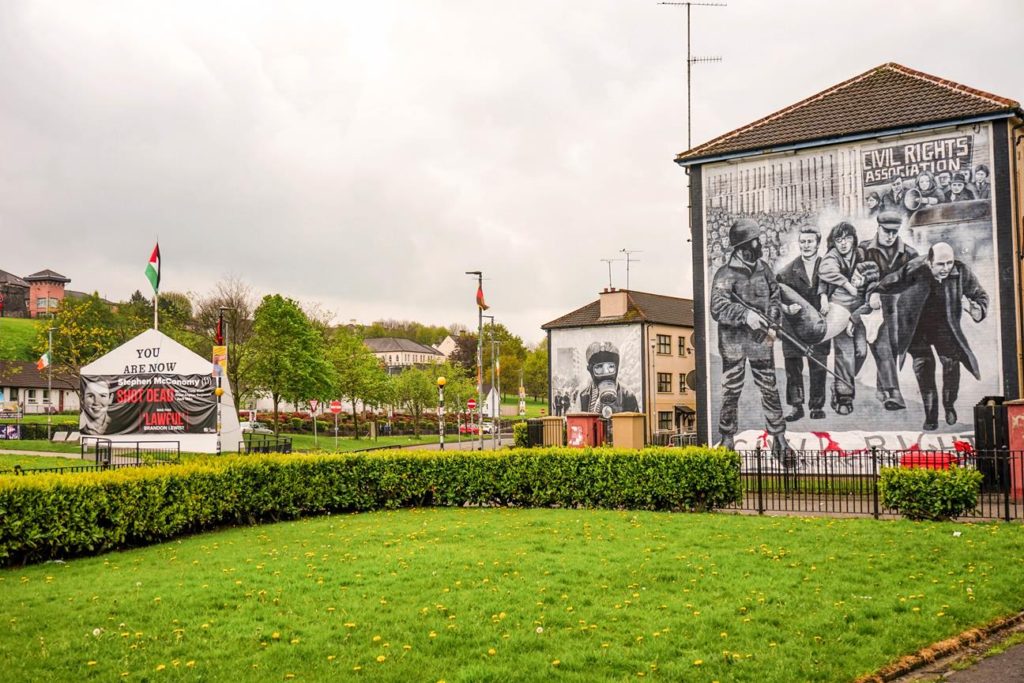
Free Derry Museum – Free Derry Museum
The Free Derry Museum focuses on the civil rights era of the 1960s, the early problems of the 1970s. It tells the story of Bloody Sunday in a very detailed way. As the museum proclaims: this museum is dedicated to all those around the world who fought and suffered for civil rights and who will do so in the future.
During the 1970s peaceful marches were increasingly organized, and there were tensions and clashes between Catholics and Protestants. The British government tried to quell the protests by issuing a decree banning the marches. In addition, there was a new law allowing authorities to intern any person suspected of terrorism. This is how Bloody Sunday happened, or more precisely, the peaceful march in Derry. At the time the authorities allowed the march to pass through the city’s Catholic neighborhoods. Instead, they will not allow demonstrators to reach the city hall.
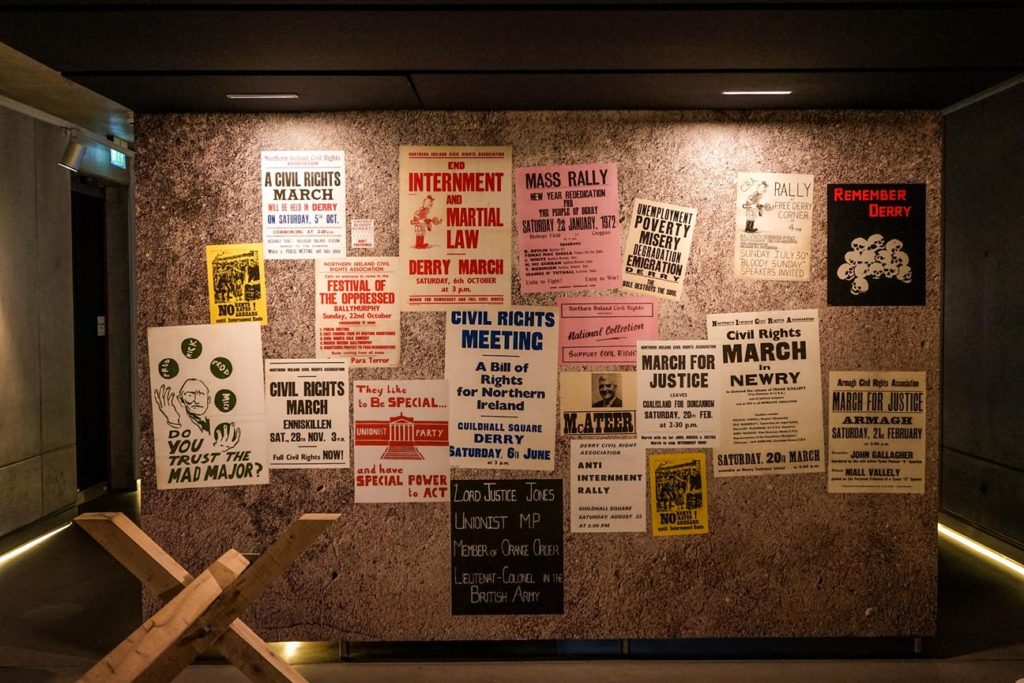
Bloody Sunday in Derry
On that day 14 unarmed demonstrators were killed and 17 wounded. The British Army fired 108 bullets. The British Army said it had killed the thugs. They said the soldiers were the ones attacked earlier, although no soldier or vehicle was hit. To confirm its story, bombs were planted on one victim. A few hours after the shooting ended, the world heard the British story. It became the government’s official version, a version that would not be officially denied for 38 years. It was only in 2010, after years of research, that the British were found guilty.
Although the people of Derry knew it was a lie, no one listened to them. It wasn’t just adults who died on Bloody Sunday. Six were under the age of 18. The country plunged into conflict. During the darkest days, bombings, riots (both from one side and the other) were everyday routine.
For many years social divisions and conflict grew, until April 10, 1998, when the Good Friday Agreement was signed. This is a peaceful agreement between Northern Ireland’s major parties and the British government.
It is actually a small part of the history of Northern Ireland and the city of Derry-Londonderry. There were still incidents of violence after the signing of the Good Friday Agreement, but they were far fewer. Now Boris Johnson, along with the government, is proposing to extend amnesty to all acts committed before the agreement (those committed for political motives).
Derry Tour Idea
How to explore Londonderry? An interesting idea is to take a guided tour, which will tell you about the history and show you tasty places. We went on such a tour with Far and Wild. More precisely, we went on a bicycle tour. We biked several kilometers around the most historical city in the northwest of Ireland. Not only the guide told us a lot, but we asked all sorts of the most bizarre questions that came to mind. What can you see on such a tour? Much depends on what you are interested in, there can be the basics of the city’s history, there can be legends, there can be the trail of the series and the popular locations of “Derry Girls”. Our tour lasted about three hours, and I can say that my trip to Londonderry would have been incomplete without it.
Derry reminded me a bit of Lodz in Poland. There were many tailor shops here as well. In the picture – a mural commemorating the old days.

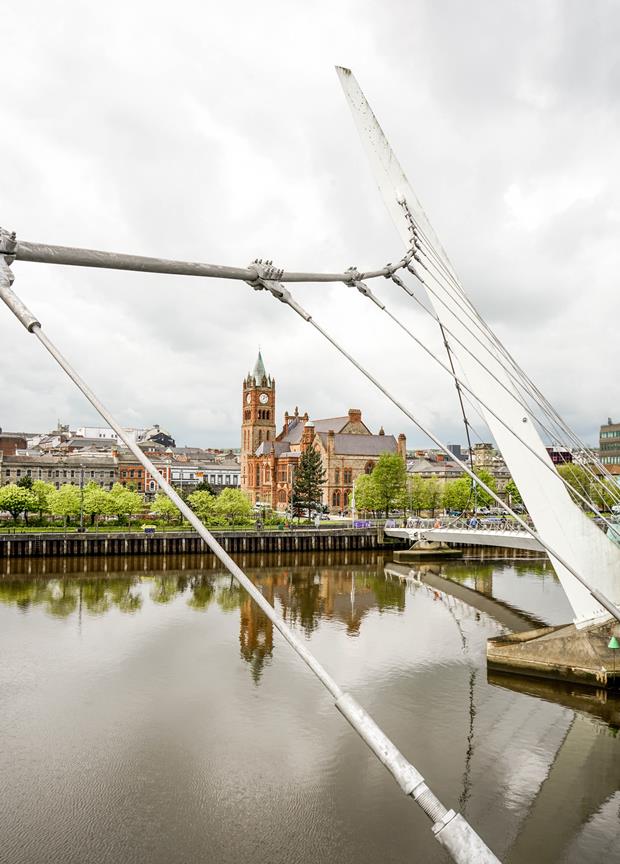
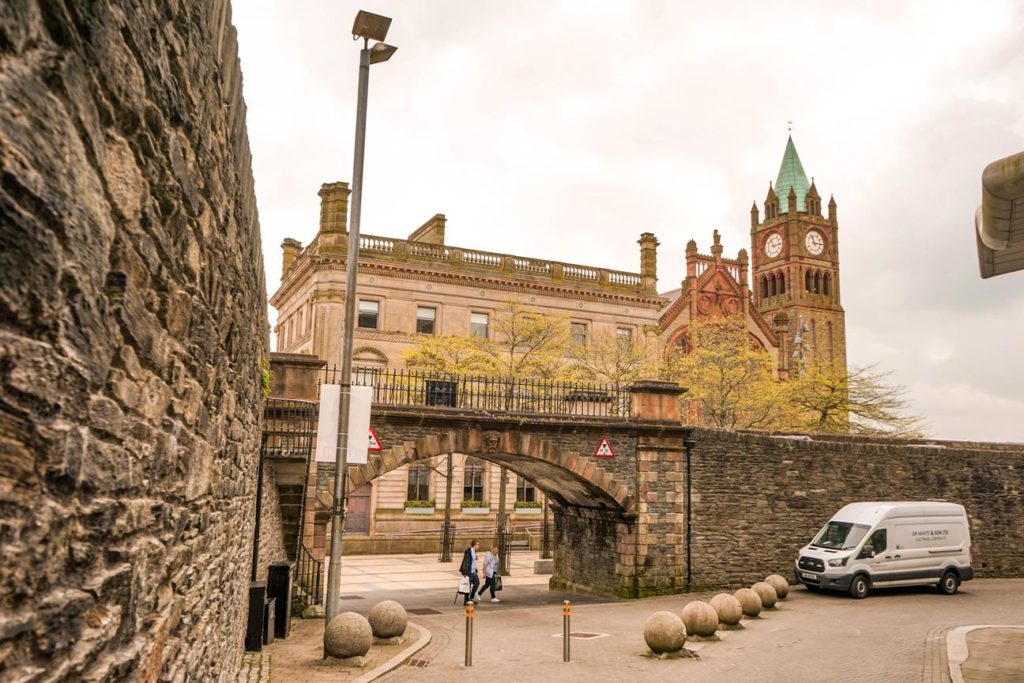
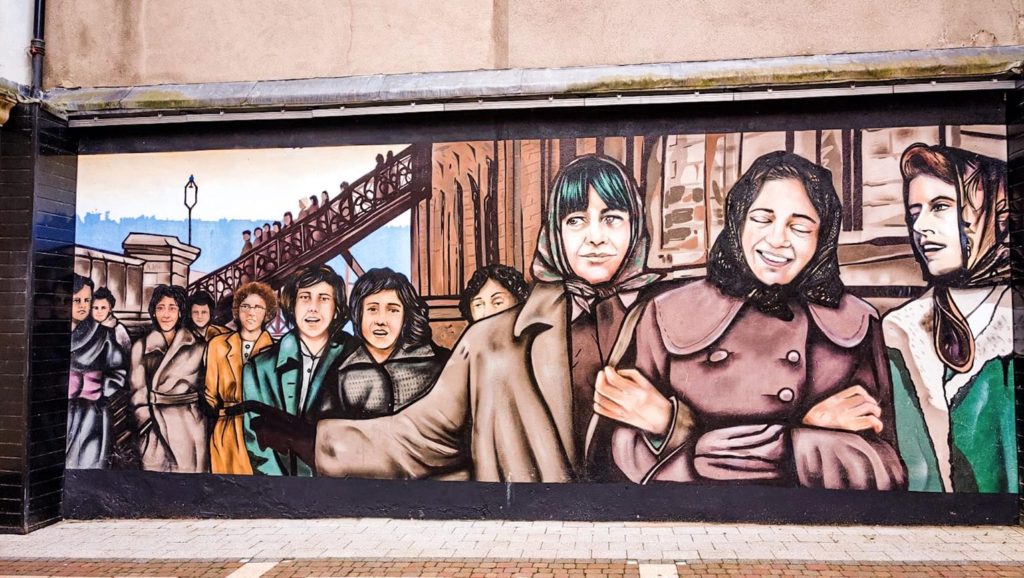

Accommodation. Where to Sleep in Derry?
There are plenty of hotels and places to stay. We spent the nights in the heart of the cathedral district, at the Bishop’s Gate Hotel. Located inside the historic city walls, it is atmospheric and carefully restored. This hotel was built in 1899. It still presents interesting Edwardian architecture, both in the furnishings and in the atmosphere of the place. I highly recommend it, plus they serve tasty breakfasts ?.
Accommodation in Derry-Londonderry, including Bishop’s Gate Hotel can be found here.
Booking.com

Derry – Where to Eat? Restaurants and Places with Tasty Food
Breakfast at Bishop’s Gate Hotel are really good and filling. Besides, you should know that every year in late April and early May the city hosts a jazz festival. We were there on the last day of the festival and I’ll admit that there’s plenty to listen to, but it was also hard to find a seat in the venues we chose. Some due to the bank holiday (early May) were closed.
That’s why we ate twice at a local knack called Pyke ‘N’ Pommes. They have good burgers and snacks. Plus, of course, a pint of beer! An iconic and recommended place for dinner is Walled City Brewery.
Other than that, I recommend the pastry and coffee at the previously mentioned Craft Village. This thatched-roof building has really good baked goods (made on site).
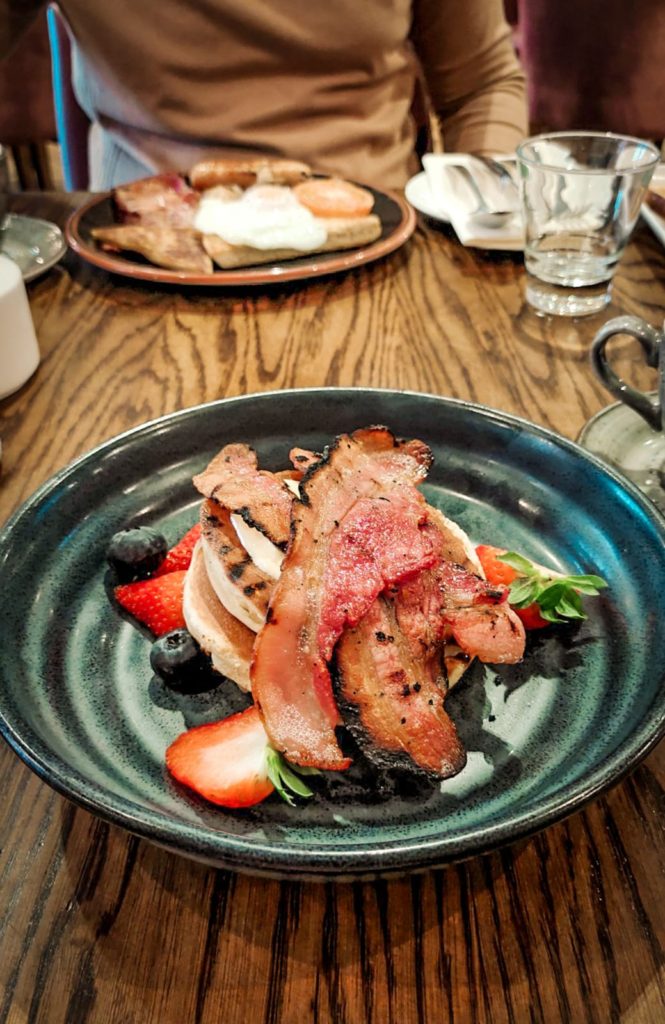
Travel in Northern Ireland
Northern Ireland is an interesting country, full of beautiful sights and interesting history. One thing is certain, you will not be bored here. Apparently small country hides dozens of beautiful spots and attractions. If you are looking for more travel inspiration, check also:
15 Best Places in Northern Ireland to Visit